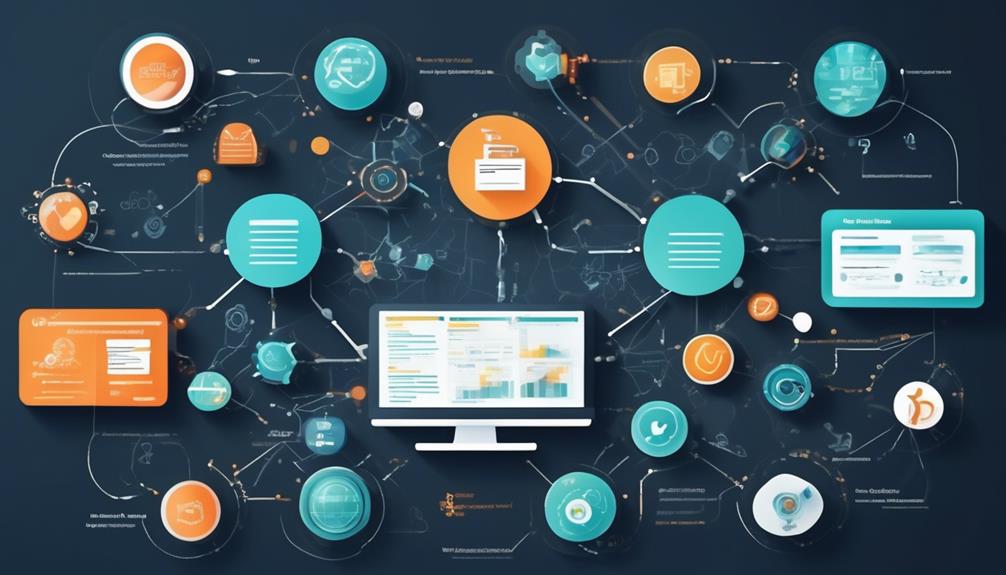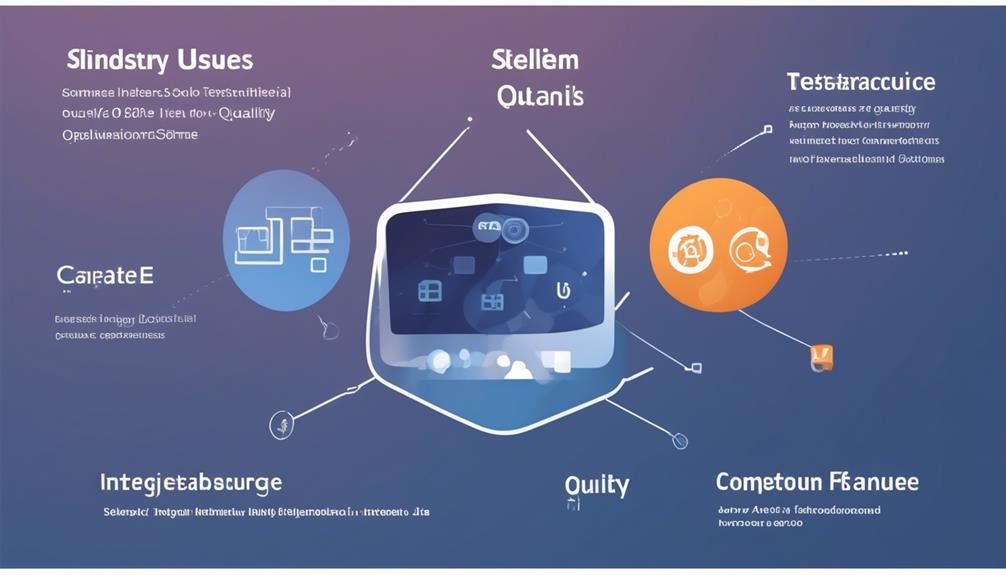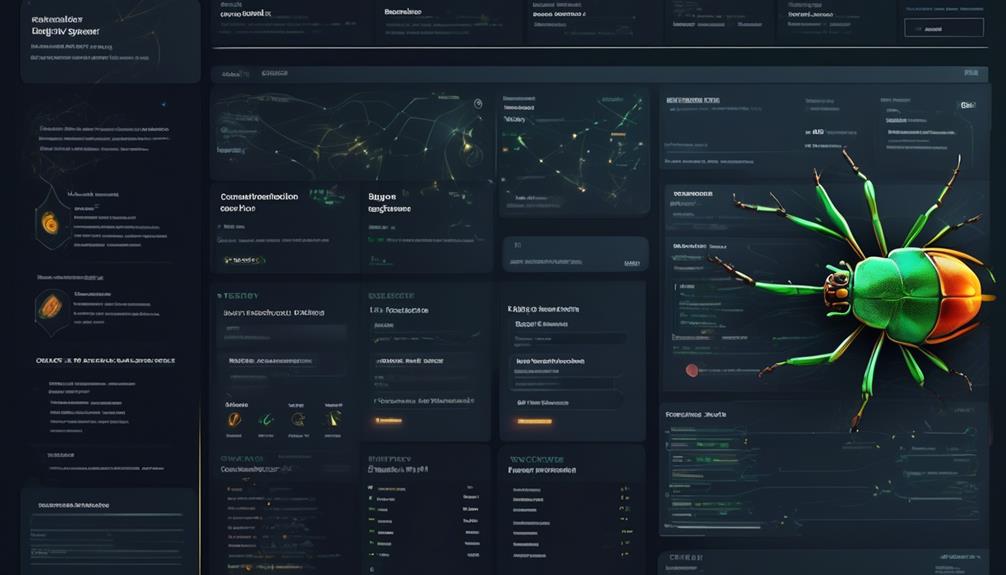As Quality Assurance Engineers, we rely on the right tools just like construction workers need them to build a strong foundation. Choosing the correct software is crucial for our daily work, influencing our efficiency and the final product’s quality. Whether it’s seamless automated testing integration, detailed reporting capabilities, or support for various testing methods, the software we choose should meet our specific needs.
Join us as we explore the preferred QA software options, the key features and benefits, and personal experiences that shape our choice of software.
Key Takeaways
- Appsurify TestBrain offers risk map visualization and faster test feedback, enhancing test automation tools and improving testing efficiency.
- Apexon is essential for implementing test automation within the workflow, providing robust framework implementation and automated regression testing.
- SeaLights is invaluable for enterprise quality governance and software risk scoring, empowering quality governance at scale throughout the software development life cycle (SDLC).
- Inflectra Suite offers customizable dashboards and real-time collaboration features, significantly improving project management and QA testing processes.
Preferred QA Software Options
We prefer QA software options that offer faster test feedback, risk visualization, and real-time identification of software quality risks. Some of the tools that meet these criteria include:
- Appsurify TestBrain: It stands out for its ability to provide faster test feedback and visualize risks on a per-change basis, aiding in effective risk mitigation.
- Apexon: This tool excels in implementing test automation within the workflow, providing automation services and framework implementation, crucial for efficient testing.
- SeaLights: SeaLights is ideal for enterprise quality governance and software risk scoring. It offers real-time identification, analysis, and flagging of software quality risks.
- Inflectra Suite: Inflectra Suite provides a holistic application testing product ecosystem with customizable dashboards, charts, and reports for real-time collaboration. It aids in comprehensive quality management.
- CucumberStudio: CucumberStudio serves as a collaboration tool for behavior-driven development. It supports the methodology and enhances team communication and collaboration.
As QA engineers, these tools are integral to our testing strategies and play a crucial role in ensuring the quality and reliability of software products.
Key Features and Benefits

What specific features and benefits do these QA software options offer that contribute to efficient testing and comprehensive quality management?
As QA engineers, we’re constantly seeking testing tools that enhance code quality, streamline automated testing, and provide robust API testing capabilities. Additionally, defect tracking, quality assurance, and software quality are paramount, making regression testing and QA automation crucial aspects of any QA software.
Appsurify TestBrain stands out with its risk map visualization and per-change basis test results, providing valuable insights for efficient quality management.
Apexon excels in implementing test automation within workflows, offering services like framework implementation and automated regression testing.
SeaLights uniquely provides enterprise quality governance and software risk scoring, allowing real-time identification and analysis of software quality risks.
Inflectra Suite offers a holistic application testing product ecosystem, with customizable dashboards and real-time collaboration features, supporting various stakeholders throughout the software development lifecycle.
Finally, CucumberStudio serves as a collaboration tool for behavior-driven development, fostering effective communication and collaboration among teams.
Each option caters to specific needs, contributing to efficient testing and comprehensive quality management in its own unique way.
User-Friendly Interface Vs. Robust Features
Balancing a user-friendly interface with robust features is a critical consideration in ensuring the optimal usability and functionality of QA software options. As quality assurance engineers, we recognize the significance of this balance in selecting the most effective tools for software testing, test management, test automation frameworks, and bug tracking.
Here’s how we view the importance of each aspect:
- User-Friendly Interface: A user-friendly interface is essential for simplifying test case creation, test execution, and result analysis. It minimizes the learning curve, allows for intuitive navigation, and enhances overall efficiency in software testing processes.
- Robust Features: Robust features are crucial for handling complex test scenarios, supporting various testing methodologies, and ensuring scalability. They empower quality assurance engineers with advanced capabilities for comprehensive test management and automation.
- Harmonious Integration: The ideal QA software seamlessly integrates a user-friendly interface with robust features to provide a holistic solution that enhances productivity and accuracy in software testing.
- Enhanced User Experience: Ultimately, the synergy between a user-friendly interface and robust features elevates the user experience, leading to more effective and efficient quality assurance processes.
Industry-Standard Software Choices

In evaluating industry-standard software choices for quality assurance, the seamless integration of a user-friendly interface with robust features remains a pivotal consideration.
As quality assurance engineers, we prioritize industry standards and software tools that cater to various testing types, including automation testing, quality control, performance testing, load testing, and unit testing.
Appsurify TestBrain stands out for its risk map visualization and per-change basis test results, which provide faster test feedback.
Apexon is a compelling choice for implementing test automation within workflow, offering services for framework implementation and automated regression testing.
SeaLights excels in enterprise quality governance and software risk scoring, enabling real-time identification and analysis of software quality risks.
Additionally, Inflectra Suite offers a holistic application testing product ecosystem with customizable dashboards, charts, and reports for real-time collaboration.
CucumberStudio serves as a valuable collaboration tool for behavior-driven development, facilitating effective communication among teams.
As quality assurance engineers, we recognize the importance of industry-standard software choices that align with the diverse and evolving needs of QA engineering.
Personal Experiences and Recommendations
My experience with industry-standard software choices as a quality assurance engineer has been instrumental in shaping my personal preferences and recommendations for software tools that align with the diverse and evolving needs of QA engineering.
Based on my experiences, I recommend the following software:
- Inflectra Suite: Its customizable dashboards and real-time collaboration features have significantly improved our project management and QA testing processes.
- Appsurify TestBrain: The risk map visualization and faster test feedback have enhanced our test automation tools, providing valuable insights and improving overall testing efficiency.
- Apexon: This software has been essential for implementing test automation within our workflow, offering robust framework implementation and automated regression testing, which aligns with our coding standards.
- SeaLights: For enterprise quality governance and software risk scoring, SeaLights has been invaluable, empowering quality governance at scale throughout the SDLC and enabling us to maintain version control effectively.
These recommendations are based on our experiences with various testing methodologies, including test plans, exploratory testing, and manual testing, and have significantly contributed to our success in quality engineering.
Frequently Asked Questions
What Software Does a QA Engineer Use?
As quality assurance engineers, we utilize a range of software tools to ensure the effectiveness and efficiency of our testing processes. Each software solution offers unique benefits, catering to specific needs in test automation, visualization, collaboration, and overall quality governance.
Our selection of software is driven by the desire to achieve comprehensive testing, seamless integration, and real-time analysis. This ensures that we maintain high standards of quality throughout the development lifecycle.
What Do You Think Is the Best Quality Assurance Software?
We believe the best quality assurance software must offer comprehensive test feedback, automation services, real-time risk identification, collaboration tools, and customizable reporting.
Each of the mentioned software solutions excels in different areas, catering to various QA needs. However, our preference hinges on the specific requirements of the project, as no single tool encompasses all the necessary functionalities.
It’s crucial to carefully evaluate the project’s demands when selecting the most suitable software.
Why You Choose Software Quality Assurance?
We choose software quality assurance because it ensures the product meets requirements and specifications, and that no errors occur during the testing process. Our focus is to monitor the testing process, ensuring it meets standards and objectives.
Testing, verification, and validation are vital processes that we carefully execute. Additionally, testware aids in the execution and reporting of tests.
Our approach is detail-oriented, analytical, and methodical, ensuring mastery in quality assurance.
What Is a Software Quality Assurance Engineer?
As Quality Assurance Engineers, we ensure software meets requirements. We validate and verify at various stages to ensure high quality.
Our testing process, supported by testware, catches errors and affirms product quality. Quality control ensures no errors exist.
Our vigilance maintains software quality.
Conclusion
In conclusion, as Quality Assurance Engineers, the software we prefer to use is Appsurify TestBrain. This is because it offers fast test feedback, risk map visualization, and smart test selection features. These features help streamline the testing process and improve software quality.
It’s important to carefully evaluate software options based on key features and benefits. This ensures that we make the best choice for effective testing.
Randy serves as our Software Quality Assurance Expert, bringing to the table a rich tapestry of industry experiences gathered over 15 years with various renowned tech companies. His deep understanding of the intricate aspects and the evolving challenges in SQA is unparalleled. At EarnQA, Randy’s contributions extend well beyond developing courses; he is a mentor to students and a leader of webinars, sharing valuable insights and hands-on experiences that greatly enhance our educational programs.










